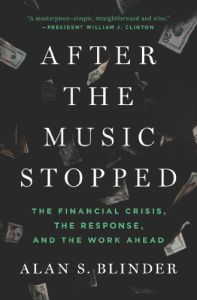Join getAbstract to access the summary!

Join getAbstract to access the summary!
Alan S. Blinder
After the Music Stopped
The Financial Crisis, the Response, and the Work Ahead
Penguin Press, 2013
What's inside?
You may be surprised by what you don’t know about the 2008 financial crisis.
Recommendation
You’ll be surprised at what former Federal Reserve Board vice chairman Alan S. Blinder has to say about the 2008 financial crisis. After years of research, Blinder fills nearly 500 pages exploring not so much what occurred in 2008 – particularly over that fateful September weekend when Lehman Brothers, AIG and Merrill Lynch hung in the balance – as what’s come to pass since. He recognizes that the complexity of the issues, further muddled by corporate interests, politicization and plain lies, has left most Americans angry and confused. He also knows that if people don’t understand the truth of what happened, then the US and the world could end up reliving those shattering times, and all too soon. He sets out to untangle – in simple, everyday, often witty prose – a knotty web of issues. He mostly succeeds, but his book requires patience. Reading it is like chatting with a droll, knowledgeable friend who gives you the straight talk. getAbstract recommends this forward-looking work to anyone seeking for an honest, clear-headed explication of past recklessness and current uncertainty.
Summary
About the Author
Economics professor Alan S. Blinder served as vice chairman of the Federal Reserve’s Board of Governors and on President Bill Clinton’s Council of Economic Advisers.


















Comment on this summary